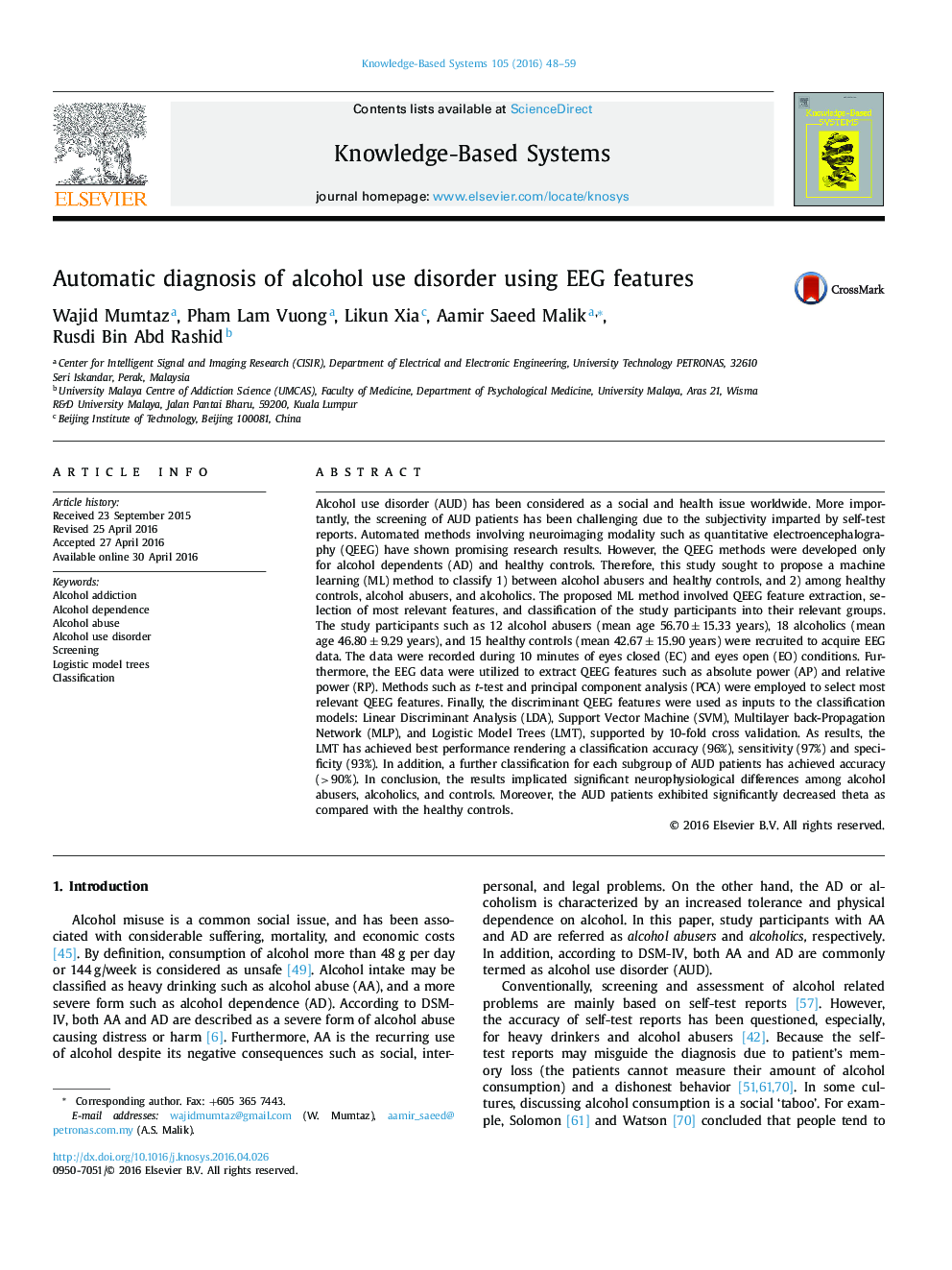| کد مقاله | کد نشریه | سال انتشار | مقاله انگلیسی | نسخه تمام متن |
|---|---|---|---|---|
| 402110 | 676854 | 2016 | 12 صفحه PDF | دانلود رایگان |
Alcohol use disorder (AUD) has been considered as a social and health issue worldwide. More importantly, the screening of AUD patients has been challenging due to the subjectivity imparted by self-test reports. Automated methods involving neuroimaging modality such as quantitative electroencephalography (QEEG) have shown promising research results. However, the QEEG methods were developed only for alcohol dependents (AD) and healthy controls. Therefore, this study sought to propose a machine learning (ML) method to classify 1) between alcohol abusers and healthy controls, and 2) among healthy controls, alcohol abusers, and alcoholics. The proposed ML method involved QEEG feature extraction, selection of most relevant features, and classification of the study participants into their relevant groups. The study participants such as 12 alcohol abusers (mean age 56.70 ± 15.33 years), 18 alcoholics (mean age 46.80 ± 9.29 years), and 15 healthy controls (mean 42.67 ± 15.90 years) were recruited to acquire EEG data. The data were recorded during 10 minutes of eyes closed (EC) and eyes open (EO) conditions. Furthermore, the EEG data were utilized to extract QEEG features such as absolute power (AP) and relative power (RP). Methods such as t-test and principal component analysis (PCA) were employed to select most relevant QEEG features. Finally, the discriminant QEEG features were used as inputs to the classification models: Linear Discriminant Analysis (LDA), Support Vector Machine (SVM), Multilayer back-Propagation Network (MLP), and Logistic Model Trees (LMT), supported by 10-fold cross validation. As results, the LMT has achieved best performance rendering a classification accuracy (96%), sensitivity (97%) and specificity (93%). In addition, a further classification for each subgroup of AUD patients has achieved accuracy (> 90%). In conclusion, the results implicated significant neurophysiological differences among alcohol abusers, alcoholics, and controls. Moreover, the AUD patients exhibited significantly decreased theta as compared with the healthy controls.
Journal: Knowledge-Based Systems - Volume 105, 1 August 2016, Pages 48–59
